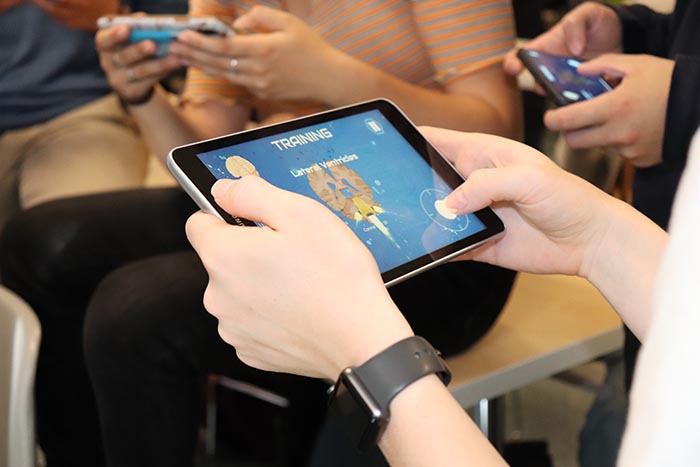UBC psychology students are taking a 3D tour of the brain using HoloBrain webVR technology.
In the course Introduction to Behavioural Neuroscience (PSYC 270), students learn about the connections between our brain and behaviour. Taught by UBC Psychology Professor Dr. Kiran Soma and Teaching Assistants Debra Bercovici, Susan Heritage, Nicole Jenni, and Melody Salehzadeh, the course covers a range of topics including neuroanatomy, neurochemistry, neuroendocrinology, and neural circuits for behaviour.
The PSYC 270 teaching team heard about HoloBrain webVR and instinctively knew the technology would help students learn about the course’s complex topics in a fun, interactive way. The instructors teamed up with Dante Cerron and Ishan Dixit from UBC’s HIVE and Emerging Media Lab (EML) to deliver this technology to students taking the course. Cerron is a software developer with the EML and Dixit is an undergraduate academic assistant with the HIVE.
In one of the labs, students don Google Cardboard glasses and use HoloBrain webVR to interact with the brain and its structures in a 3D virtual environment.
HoloBrain webVR is a web-based application based on the HoloBrain—which blends virtual 3D content with real 2D images. The technology is specifically designed for students to learn topics such as neuroanatomy through interactivity.
“The HoloBrain webVR has been used in education to solidify our understanding in three dimension as opposed to two dimension, as many traditional methods focus on. Hopefully it will enhance our understanding of neuroanatomy as a whole.”
HoloBrain was developed by Dr. Claudia Krebs, members of UBC’s Emerging Media Lab, and students enrolled in Microsoft Vancouver’s Garage Internship Program.
Inspired by the HoloBrain’s ability to display spatial relationships between brain structures, HoloBrain webVR delivers a similar experience to a wider audience, making this a perfect tool to teach large classes.
“We’re taking advantage of this technology that the Emerging Media Lab has developed by bringing it into the classroom to help educate psychology students.”
The students also expanded their learning with CEREBRO: The Virtual Lab, a ‘game-ified’ brain experience which teaches students about neural pathways through an immersive space-craft game. The HIVE has been instrumental in developing this technology and customizing it for the course’s content. The HIVE, short for Hackspace for Innovation and Visualization in Education, uses advanced technology to modernize learning.


The CEREBRO Virtual Lab Neuroanatomy App.
“The students have said that using this technology consolidates their memory because they can visualize what they are learning from their textbooks.”


